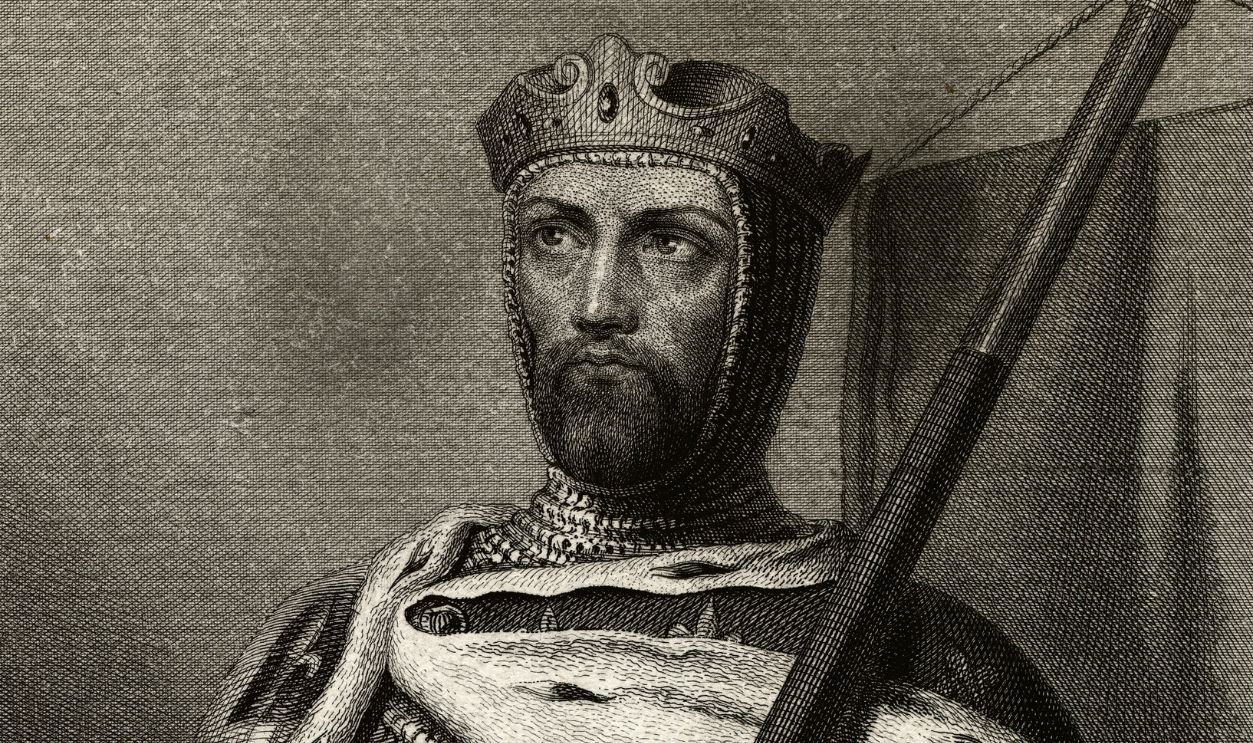Bloodshed And Determination
Few people outside of experienced English history buffs are familiar with the name Henry II. Despite rising to power through blood and conflict, and then proceeding to reign in the same manner as he had started, many people forget Henry II. His ruthlessness expanded England’s power well into France’s borders, and it caused Henry problems when he passed that same trait on to his power-hungry sons. Henry II shaped not just England but Wales, Scotland, Brittany, and Ireland. He became the man with a plan—and only his sons could stop his rampage across Europe.
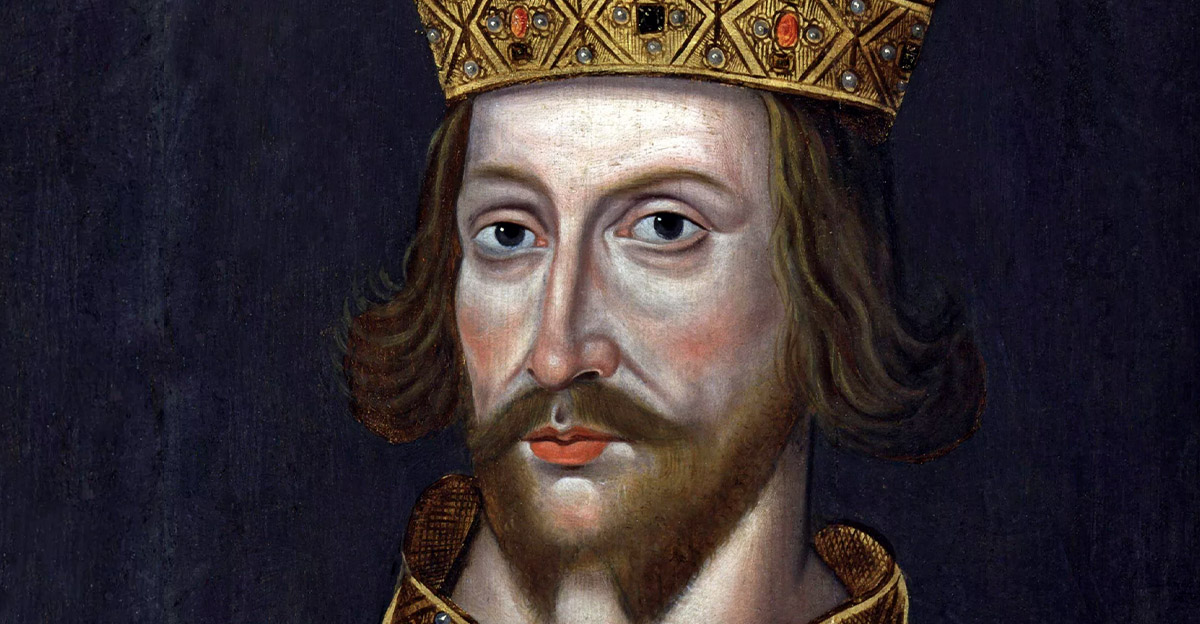
1. He Was Born During Conflict
In the early days, strife and conflict boiled across England. This was the world that Henry entered when his mother, Empress Matilda, gave birth to him in March 1133. Henry was the product of Matilda’s second marriage to Geoffrey Plantagenet, Count of Anjou. This connection proved significant for Henry later in his life. However, at the time of his birth, the entirety of England had their eyes focused tightly upon his mother, the only legitimate surviving child of Henry I, the dying King of England.
 Unknown Author, Wikimedia Commons
Unknown Author, Wikimedia Commons
2. His Birth Affected Lineage
Henry I, the fourth son of William the Conqueror, rose to the throne in 1100 following the loss of his childless elder brother, William II. Although he produced two children, Matilda and William, by the time he neared the end of his life, only one of those children remained, Matilda. Despite acquiring the throne through dubious circumstances himself, Henry forgot the first rule of being an early English monarch: It is far easier to gain power than it is to hold onto it.
 Georgemiller381, Wikimedia Commons
Georgemiller381, Wikimedia Commons
3. His Mother Was The Rightful Heir
Wishing for his direct bloodline to carry on the throne and further legitimize his reign, Henry intended for Matilda to succeed him. But Matilda’s gender posed an obvious problem, as daughters did not typically gain power from their fathers. To secure Matilda’s future position, Henry gathered pledges of support for her from all of his nobles. Unfortunately for Henry, it is easy to disregard a pledge when the holder of the pledge no longer breathes.
4. He Represented A Power Struggle
Upon the sudden passing of Henry I in 1135, his nephew Stephen of Blois took advantage of the situation presented to him. As the son of William the Conqueror’s daughter Adela, he possessed royal blood. With Matilda otherwise occupied with conflicts in Normandy, Stephen rode to London and claimed the throne for himself. During this period, kingship consisted of a popularity contest. Gain enough support from London, the nobility, and the church, and you could assert your power. Stephen gathered these things and launched not just Matilda but two-year-old Henry II into a power struggle that tainted his entire life with turmoil and conflict.
 Unknown Author, Wikimedia Commons
Unknown Author, Wikimedia Commons
5. He Grew Through Conflict
Henry II grew up under the shadow of conflict. Stephen barely succeeded in holding onto power in England. His support in London and from the church gave him the crown. However, the country remained divided, with many supporting Matilda and even more nobility remaining neutral, supporting neither party. Matilda and Stephen fought over England for 15 years. In the meantime, Henry’s father, Geoffrey, carried out his own fights—and gave Henry a lifelong enemy in the process.
6. His Father Stole Lands
As you may recall, Henry’s father, Geoffrey Plantagenet, held the title of Count of Anjou, a landlocked county in France to the west of Brittany, and two counties south of England, controlled by Normandy. While Matilda and her illegitimate half-brother attacked the throne of England directly, Geoffrey attacked Normandy, carrying on fighting there until finally succeeding in 1144, thus conquering the land in the name of his wife, Matilda. Bathed in conflict as Henry II was, it was only a matter of time before he developed a taste for ruthlessness himself.
7. He Fought For Himself
Henry spent his childhood moving around from France to England as suited his parents' needs. By the age of 14, Henry felt that the time had come for him to involve himself in his mother’s battles. Henry, along with his immediate household and a group of mercenaries, set sail from Normandy, landing in Wiltshire, England. Unfortunately, Henry’s visions of glory and success quickly floundered, leaving him with nothing but failure and problems.
 AnonymousUnknown author, Wikimedia Commons
AnonymousUnknown author, Wikimedia Commons
8. He Failed To Plan
Initially, Henry caused significant panic in England, disrupting the area where he landed. However, at only 14, Henry hadn’t properly planned for the expedition. He quickly ran out of money. Without money, he couldn’t pay the forces he brought with him. He also couldn’t return home to Normandy. Henry became stuck, and no one would help him get home—not even his mother.
 Henry Warren, Wikimedia Commons
Henry Warren, Wikimedia Commons

History's most fascinating stories and darkest secrets, delivered to your inbox daily.
9. His Parents Abandoned Him
Matilda refused to support Henry in his failed expedition. His uncle, Matilda’s half-brother, refused to offer aid as well. These refusals give a full picture of the situation, strongly implying that neither adult had supported Henry’s involvement in the first place. Henry appeared to be in big trouble, and he had no way out until help came to him from the unlikeliest of sources.
 The Pillars of the Earth (2010), Tandem Communications
The Pillars of the Earth (2010), Tandem Communications
10. His Enemy Saved The Day
In the end, Stephen paid Henry’s debts, allowing him to return to Normandy. No one, then or now, knows why Stephen chose to do this. Some theorize that Stephen felt sorry for Henry, a child and a part of his extended family. However, others believe that Stephen had far more strategic reasons for intervening on Henry’s behalf.
 Universal History Archive, Getty Images
Universal History Archive, Getty Images
11. He Represented The Future
By 1147, when all of this occurred, Stephen and Matilda had been fighting for nearly 10 years, and the feud had reached a deadlock. Stephen may have tired of fighting. Instead, Stephen wanted a peaceful end to the conflict and thought that developing favorable relations with Henry may have been one way to do so. Although history eventually proved Stephen right, Henry needed to suffer further before gaining his dream.
 The Pillars of the Earth (2010), Tandem Communications
The Pillars of the Earth (2010), Tandem Communications
12. He Focused On France
Although Henry attempted one more attack against his uncle in 1149, it came to nothing. Stephen handled it swiftly, and Henry returned to Normandy without success. By this point, the Anarchy (as Matilda and Stephen’s conflict became known as) had begun to fizzle out, with each side realizing that they were unlikely to achieve success through force. Moreover, Geoffrey’s battles in France proved far more successful. Across the channel, Henry sat upon a significant source of power, which brought him into the orbit of another global monarch who wished to squash his ambition.
 Original creater of enamel unknown., Wikimedia Commons
Original creater of enamel unknown., Wikimedia Commons
13. He Caused A Problem
Officially, the King of France, Louis VII, represented the head of state and the ultimate control over the country's various states and duchies as he was the feudal lord of these lands. However, in practical terms, the Counts and Dukes of those areas wielded far more control than the distant figure of the King. Geoffrey already controlled the county of Anjou. Through his successful campaign in Normandy, he also wrestled that Duchy away from Stephen and into his own hands. King Louis began to eye Geoffrey and his heir, Henry, with growing concern. Henry would spend the rest of his life fighting to keep his lands from the French King’s grasp.
 Henri Decaisne, Wikimedia Commons
Henri Decaisne, Wikimedia Commons
14. He Controlled Too Much Land
Louis feared Geoffrey’s growing power. Henry’s reasonable chances of gaining the English crown only made Louis's concern greater as the crown provided Henry with unlimited forces to push his French control further. When Geoffrey made Henry Duke of Normandy in 1150, Louis had to take action. He threw his support behind Stephen by claiming that Stephen’s son Eustace was the rightful heir to the Duke of Normandy. Thus, another battle in Henry’s life began.
15. He Fended Off Invasion
Louis backed up his words with actions. He launched a campaign against Henry, seeking to remove him from Normandy and place the supposedly rightful Eustace in his place. Although never afraid of a fight, Geoffrey exhibited a keen political sense as well and encouraged his son to seek peace rather than bloodshed in this instance. He encouraged Henry to attempt to appease Louis rather than antagonise him. However, prone to fits of temper and stubborn ruthlessness, fighting appeared to be more in Henry’s nature than negotiating at this point in his life.
16. He Entered A Peace
The exact date when Louis entered Normandy is unclear. However, by August 1151, Henry saw sense in his father’s advice and he arranged peace with Louis. In return for accepting Louis as his feudal lord as well as giving him a swath of land within the Normandy borders, Louis ceased his campaign against Henry and instead recognized him as the Duke of Normandy. Unfortunately, Henry could not make peace with Louis last—he quickly threw Louis' mistakes back in the monarch’s face.
17. He Set His Eyes Elsewhere
Louis married Eleanor of Aquitaine in 1137. As the Duchess of Aquitaine, Eleanor presented an opportunity for the French monarchy. Louis VI married her to his son Louis VII, which settled the matter of Aquitaine as the Duchy would become part of the French crown’s property upon the ascension of their firstborn son to the French throne. Unfortunately for Eleanor and Louis, this plan had one small problem: Eleanor never gave Louis any sons.
 Frederick Sandys, Wikimedia Commons
Frederick Sandys, Wikimedia Commons
18. He Bided His Time
Eleanor birthed two children for Louis, both daughters. By 1150 and the birth of their second daughter, Louise and France began to write Eleanor off entirely; at 26, they viewed her as too advanced in age to trust her to provide a son. Therefore, Louis needed to get out of his marriage of 13 years, even if this meant giving up Aquitaine. As Louis and Eleanor began to separate their lands and dissolve their marriage, another man waited in the wings to sweep her up.
19. He Stole The Woman
Louis and Eleanor annulled their marriage on the grounds of consanguinity, otherwise known as being too closely related (they were third cousins once removed), on March 21, 1152. Eight weeks later, on May 18, 1152, Eleanor remarried to Henry II, Duke of Normandy. Despite both Henry and Eleanor being people of high status, they married humbly and in secret, for they feared Louis’ reaction—with good reason. Their marriage ruined everything that Henry had previously worked to preserve.
20. He Broke The Rules
Henry’s marriage to Eleanor, which many believe he began planning before Eleanor and Louis divorced, ruined the fragile peace that Henry had made with Louis not quite a year earlier. With this union, Henry couldn’t have insulted Louis more if he tried. Henry and Eleanor married without Louis' permission (as they knew he’d not grant it); this defied Louis' authority as both their feudal lords. Louis divorced Eleanor because they were too closely related. However, Henry and Eleanor had even closer familial ties than Eleanor and Louis had. Finally, by acquiring Aquitaine through Eleanor, Henry had something that Louis wanted very much—and it wasn’t his ex-wife.
21. He Had Too Much Power
Henry’s father passed in 1151. This gave him control of not just Normandy but the rest of his father’s lands, which included Anjou and Poitou. By adding Aquitaine to this list, Henry now controlled more land in France than King Louis did. This could not stand, and Henry had enough enemies by this point in his life that Louis had no problem finding support for his campaign against Henry. Henry, born of conflict, now faced the biggest conflict of his life—for now, at least.
 Gerald of Wales, Wikimedia Commons
Gerald of Wales, Wikimedia Commons
22. He Made Enemies
Unsurprisingly, Stephen and his son Eustace joined Louis in attacking Henry’s few holdings in England. Shockingly, Louis had one other major name among his French allies against Henry: Geoffrey VI, Henry’s younger brother. Geoffrey claimed that upon their father’s passing, Henry took his rightful inheritance from him. Whether these claims remain founded or not doesn’t change the fact that Henry had a big problem on his hands. The question became, what did Henry intend to do to stop it?
23. He Had Experience
Although scarcely 20, Henry had spent nearly his entire life either fighting or watching his parents fight for lands. He’d honed his skills in this area and handled the attacks on his lands in France swiftly. Once Louis fell ill, he backed out of the attack, significantly diminishing the coalition's force. Without additional support, Henry forced his brother to negotiate, which left only one battlefront—the only battlefront that mattered.
24. He Didn’t Need To Win
If Stephen hoped that Henry’s battles in France would delay him and Stephen could finally settle the conflict of the English throne, then he had another thing coming to him. Henry returned to England with an admittedly small force of men. However, he had a wealth of determination and strategy that made up for what he lacked in manpower. Henry didn’t need to defeat Stephen. He just needed to tire him out.
25. He Tired Stephen Out
Stephen and Henry skirmished across England for roughly a year. However, by the close of the year, both parties began to tire of the constant back and forth. Whispers of peace began to float around. The sudden passing of Stephen’s son, Eustace, strengthened these discussions as Stephen’s second son expressed no interest in taking the throne. After roughly 20 years of on-and-off battle, a battle that lasted Henry’s entire life up to this point, Henry got what he wanted without having to do anything at all.
26. He Got What He Wanted
In the end, Stephen and Henry agreed to a peaceful compromise. Stephen remained on the throne for the duration of his life. However, he adopted Henry and named him his heir. Therefore, upon Stephen’s passing, Henry would rise to the throne and therefore restore the proper order that his grandfather had intended 20 years earlier. They only had one problem: Henry had to survive long enough to see Stephen pass and give him the throne.
 Matthew Paris, Wikimedia Commons
Matthew Paris, Wikimedia Commons
27. He Had No Opposition
Although Stephen’s second son, William, appeared content to give up his claims to the throne so long as Henry allowed him to keep his lands, he still represented a threat to Henry. Rumors of plots against Henry’s life began to swirl, forcing him to flee back to Normandy for a time. Thankfully, the odds were very much in Henry’s favor, and he did not have to hide away in France for as long as originally anticipated. However, trouble lurked in the darkness, simply waiting for Henry to see it.
https://en.wikipedia.org/wiki/Henry_II_of_England
28. He Got Lucky
Despite being in seemingly good health when they signed the agreement, Stephen fell ill suddenly in late 1154, and Henry benefited greatly from his swift passing. By December 1154, England crowned Henry and Eleanor their King and Queen. While Henry’s rivals (Stephen’s son as well as his brothers) all passed within a few years of his coronation, securing his position easily, Henry inherited a much bigger problem from Stephen.
 AnonymousUnknown author, Wikimedia Commons
AnonymousUnknown author, Wikimedia Commons
29. He Inherited Ravaged Lands
The civil war between Stephen and Matilda devastated England. Unauthorized castles from lords looking to gain more power had popped up all over. The coffers were scant, and Stephen lost the lands that Henry’s grandfather had taken from Scotland and Wales, leaving England with far less control than they’d had at the start of Stephen’s reign. Henry inherited a broken country with more things going wrong than were going right. But tired as he may have been, he couldn’t afford to stop fighting now.
 Eric Gaba (Sting - fr:Sting), Wikimedia Commons
Eric Gaba (Sting - fr:Sting), Wikimedia Commons
30. He Was Ruthless
Thankfully, Henry knew how to fight. While not known to be vicious or unnecessarily cruel, Henry was ruthless in the pursuit of what he wanted, and what he wanted was to restore the kingdom that his grandfather once had. He destroyed all unauthorized castles, and he spent his early years on the throne in conflict with Scotland and Wales until he restored what they’d taken during Stephen’s reign. However, Henry needed more than just England. He needed France, too, and that proved another matter entirely.
 James William Edmund Doyle / Edmund Evans, Wikimedia Commons
James William Edmund Doyle / Edmund Evans, Wikimedia Commons
31. He Returned To France
Henry II initially settled his still-existing tensions with King Louis of France by agreeing to marry his eldest son, Henry the Younger, to Louis’ daughter Margaret. With that matter settled, Henry pushed into Brittany, claiming it for himself and increasing his authority in France even further. Unfortunately, Henry had a fatal flaw: He’d spent too many years fighting. He couldn’t content himself with one victory. He needed to have it all.
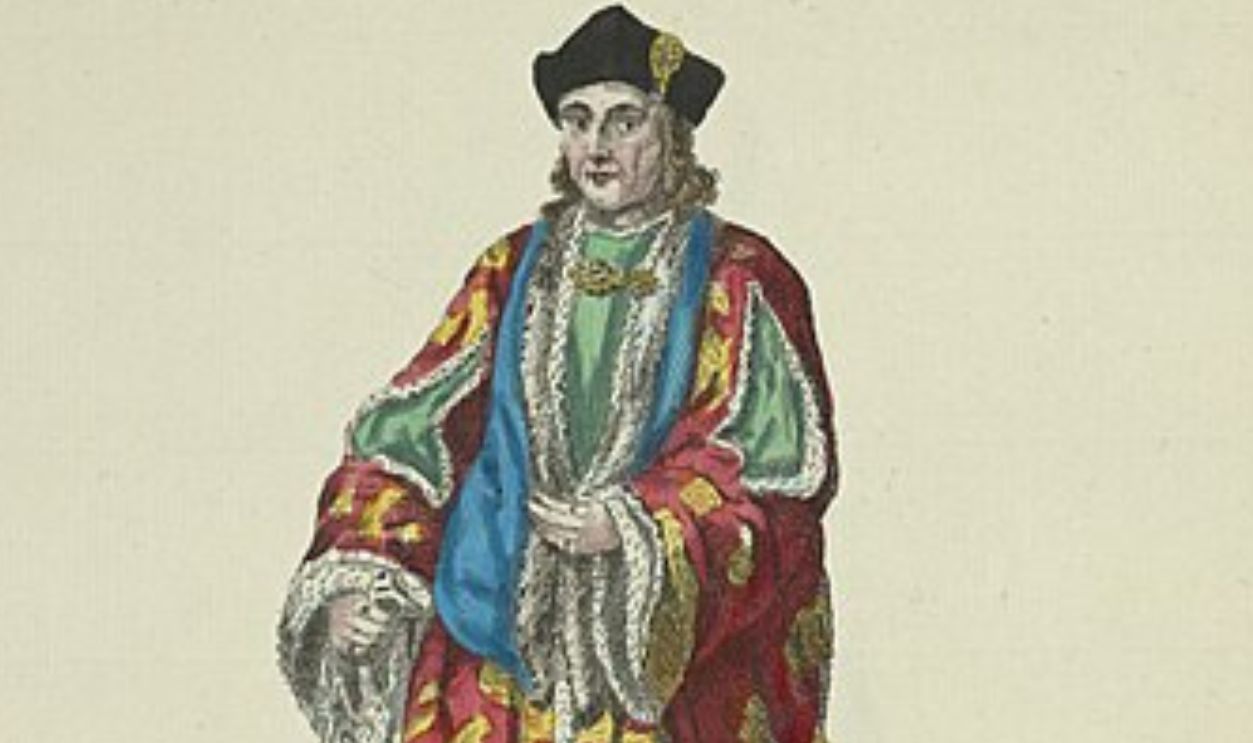 Scan by NYPL, Wikimedia Commons
Scan by NYPL, Wikimedia Commons
32. He Continued To Fight
Although Louis and Henry signed a Peace Treaty in 1160, Louis immediately began making alliances that flew in the face of Henry and the peace. Henry couldn’t let this insult go without a response. So, Henry bullied as many religious authorities as it took to get his son and Margaret married, although they were five and three, respectively. Naturally, this enraged Louis, and the two prideful men descended into conflict again. However, Henry couldn't care less about Louis' aggression—he already had everything he wanted.
33. He Had More Than Anyone
Henry not only controlled more land in France than any one group had since the 9th century, but he ruled over what many presume to be the largest court in Europe at the time. He used his power and wealth to support his growing family, to elevate his court further, and to reform England to fit his vision. Once again, Henry appeared to be on top of the world—and once again, Henry’s ruthless ambition couldn’t help but bring everything down around him.
 AVCO Embassy Pictures, The Lion in Winter (1968)
AVCO Embassy Pictures, The Lion in Winter (1968)
34. He Chose His Friend
Henry’s relationship with the church imploded when he appointed Thomas Becket as Archbishop of Canterbury in 1162. A friend and his former Chancellor, Henry, believed that Becket would depend upon him, therefore giving him more control over the church. However, evidence suggests that neither his wife nor his mother believed Henry had made the right choice. History quickly proved what we all already know: Women are always right.
 The original uploader was Saracen78 at English Wikipedia., Wikimedia Commons
The original uploader was Saracen78 at English Wikipedia., Wikimedia Commons
35. He Should’ve Listened To His Wife
Becket immediately reformed his entire personality, casting any ties to Henry aside and fully embracing himself as a figure of religion. Both men were stubborn, and as their conflicts grew, neither was willing to back down. Their contention quickly became a global matter as they each dragged other powers into the arguments. Maybe, if Henry had better control over his temper, things could have been different. Unfortunately, that was not who Henry was.
36. He Crowned His Son
Henry decided to crown his son, Henry the Younger, as King of England to rule alongside him. Typically, the honor of crowning a monarch went to the Archbishop of Canterbury. However, when Henry failed to restore friendship with Becket, he gave the task to the Archbishop of York. This set off another series of complaints between Becket and Henry until Early December 1170, when it seemed that the two men would finally settle the matter until the unthinkable happened—and it was all Henry’s fault.
 Unknown Miniaturist, English (active 1170s in Cirenchester), Wikimedia Commons
Unknown Miniaturist, English (active 1170s in Cirenchester), Wikimedia Commons
37. He Lost His Cool
Henry, famous for a bitter temper, exclaimed that all of his household were “miserable drones and traitors” for not defending him against Becket's plight. So, four of his knights took him seriously. They secretly went to Canterbury to confront Becket, intending to detain him should he refuse to go back on his actions that broke his agreement with Henry. Like Henry, Becket had the chance to avoid his fate if only he could set aside his enormous pride. Like Henry, Becket was not that man.
38. He Spoke Out Of Turn
Thomas Becket possessed a great sense of pride and vanity. He was the Archbishop of Canterbury. They would not capture him in his church. He refused capture and as a result, the knights hacked him to pieces until he perished, bloodied and suffering in front of the altar of one of England’s highest churches. As the news spread, Henry became the scorn of Europe. Henry had the chance to settle the matter, yet his refusal to punish Becket’s attackers only made matters worse. Soon, Henry’s carefully built empire began to crumble, brick by brick.
39. He Lost Control
Henry and Eleanor ruled together for many years. Henry gave her much authority, including allowing her to control Aquitaine seemingly on her own. They also had eight legitimate children: five sons and three daughters. Despite the outward appearance of a prosperous family, Henry struggled to control his children, who’d likely inherited his quick temper and ruthless pursuit of power. In the end, it became his undoing.
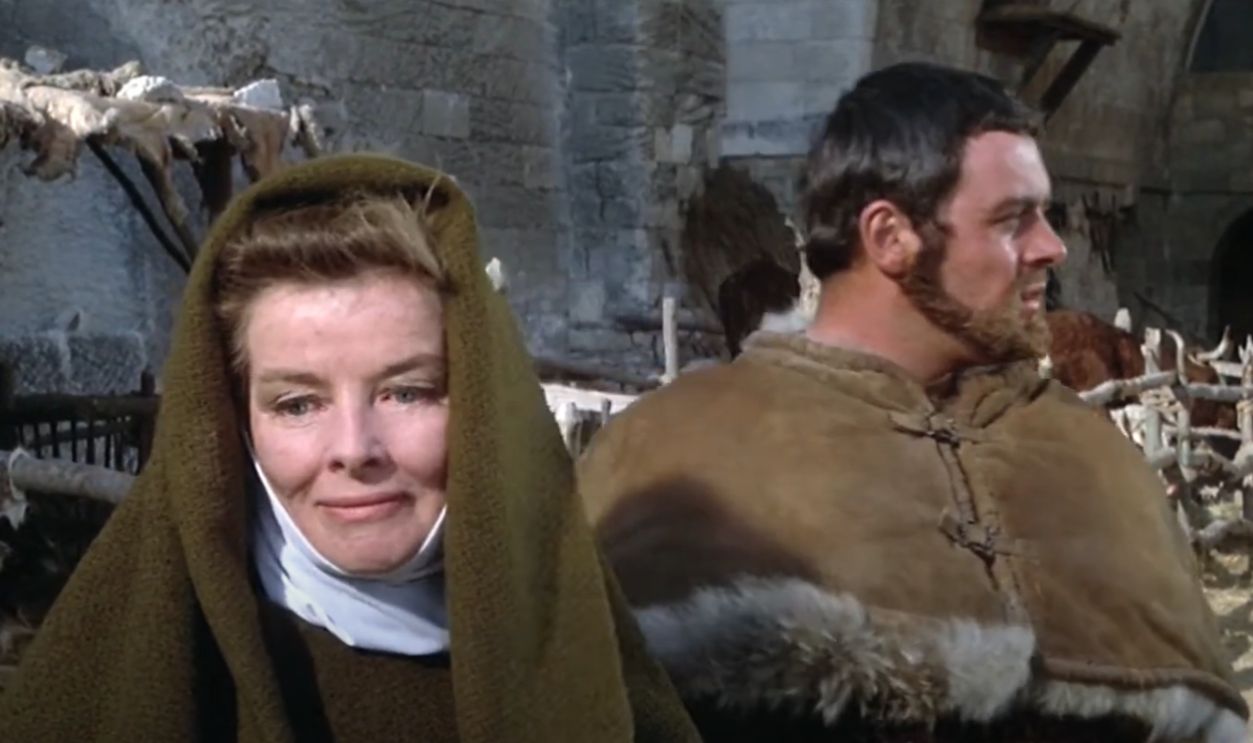 AVCO Embassy Pictures, The Lion in Winter (1968)
AVCO Embassy Pictures, The Lion in Winter (1968)
40. His Sons Were Restless
Following the Becket disaster, the cracks in Henry’s family began to appear. Despite elevating his eldest son, Henry the Younger, to King, Henry did not give his son much power, and Young Henry began to chafe against this. Similarly, his next son, Geoffrey, also felt his father had failed to properly support him, with a stalled marriage leaving him without any true authority. And to make matters worse, Henry’s own marriage had disintegrated, so Eleanor saw no problem in encouraging their third eldest son, Richard, to join his brothers when Henry’s greed and callousness stirred up even more trouble.
 AVCO Embassy Pictures, The Lion in Winter (1968)
AVCO Embassy Pictures, The Lion in Winter (1968)
41. He Made A Miscalculation
Henry gifted his youngest son, John, castles that had belonged to Henry the Younger, which proved to be the spark to ignite the powder keg that his family had become. His three eldest sons fled to France. Eleanor failed to join them. Henry's men tracked Eleanor down and took her captive, without publicly announcing the arrest, and imprisoned her in various castles and fortresses for 16 long, brutal years.
Over the next decade, Henry would periodically release his prisoner-bride Eleanor for holidays and diplomatic occasions when her presence was needed. By 1184, it became clear that the only way Henry could retain his power was if Eleanor was at his side. After years in France, he finally brought her back to England. But don't get too excited. Though Eleanor was no longer in isolation, she was still a prisoner. She even had a jailer who monitored and limited her movements.
However, back immediately after Henry's capture of Eleanor, his sons led a bitter rebellion against their father with the aid of Henry’s longtime enemy, King Louis. Henry had faced many foes throughout his life. Yet none of them shared his temper, his savviness, and his ruthless determination to succeed. Henry needed a divine miracle to subdue his children; thankfully, he had one in his back pocket.
 AVCO Embassy Pictures, The Lion in Winter (1968)
AVCO Embassy Pictures, The Lion in Winter (1968)
42. He Used His Tragedy
To gain support and stop the chaos that surrounded him, Henry showed his political savviness. He travelled to Becket’s tomb in Canterbury to declare that the entire rebellion was his divine punishment for Becket’s passing. In exhibiting the right amount of penance, Henry pulled his political authority back just in time to turn the rebellion around. However, the damage had already been done, and Henry’s reign would never be the same again.
 Basher Eyre, Wikimedia Commons
Basher Eyre, Wikimedia Commons
43. He Pardoned His Sons
Henry dealt with his children favorably, giving them lands and castles to appease their appetite. Over time, most of the issues resolved themselves. Henry gave Richard Aquitaine, and Geoffrey succeeded in controlling Brittany through marriage. However, John, who’d never rebelled against his father, quickly rose as Henry’s favourite, and Young Henry spent the years following the revolt travelling Europe, showing little interest in the country that he was meant to run. This shift between his children caused the tension to rise again.
 AVCO Embassy Pictures, The Lion in Winter (1968)
AVCO Embassy Pictures, The Lion in Winter (1968)
44. He Shouldn’t Have Pardoned Them
Young Henry demanded more land, which set off another series of childish sibling bickering, strengthened by the power each son now held. In the end, Young Henry passed suddenly, seemingly resolving the issue. Except when Henry II attempted to redistribute his lands among his sons to account for the loss of Young Henry, his sons continued to bicker, further setting off another series of arguments that threatened to boil over into full rebellion until Henry called in the big guns: Eleanor.
45. He Needed His Wife
In the end, Henry had to get Eleanor to demand that Richard stop disobeying his father, threatening to give Normandy and even England to Geoffrey if Richard did not behave. This resolved this issue. However, Geoffrey passed suddenly as well. Remarkably, this single event proved to be Henry’s undoing. Rather than resolving their issues, this loss only caused his remaining children to double down on their animosity. Henry had no hope of controlling them, yet he continued to try.
 AVCO Embassy Pictures, The Lion in Winter (1968)
AVCO Embassy Pictures, The Lion in Winter (1968)
46. He Fought With France Again
Geoffrey left behind two children. King Philip, the new King of France, and Geoffrey were friends; as a result of the passing, Philip wanted custody of Geoffrey’s children. Despite never showing any fondness for Geoffrey or his children, Henry refused. The years of peace that Henry had with Philip shattered in that moment, and Henry once again began feuding with France. Except, now he had a new weakness which Philip could exploit: Henry’s inability to get any of his children to behave.
 Master of the City of Ladies, Wikimedia Commons
Master of the City of Ladies, Wikimedia Commons
47. His Son Revolted Again
Philip encouraged animosity between Henry and Richard, which finally flared into conflict when Henry refused to agree to a marriage between Richard and Philip’s daughter Alys. Richard joined forces with Philip, and they began a campaign against Henry. Ruthless to the end, Henry suited up for battle although he knew the truth: his health had already caused his days to be numbered.
48. He Couldn’t Keep Fighting
Henry suffered from a bleeding ulcer that made him increasingly ill. However, Henry continued to have his pride. He knew he could not fight, yet he suited up for battle anyway. Only once he’d road to meet Philip and Richard on horseback did he give in to their demands: giving Alys to Richard and naming Richard as his heir. Perhaps Henry could have held out a little longer. Unfortunately, his children couldn’t let him pass in peace; they needed to deliver one more crushing blow.
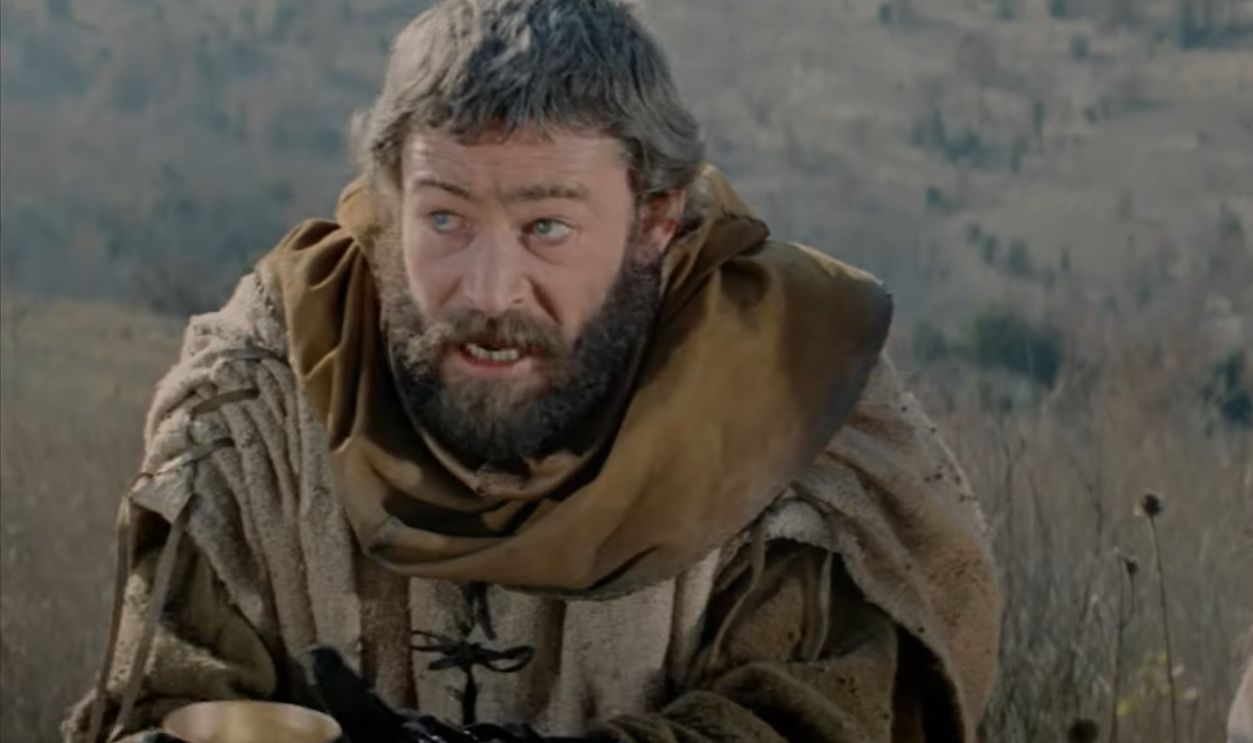 AVCO Embassy Pictures, The Lion in Winter (1968)
AVCO Embassy Pictures, The Lion in Winter (1968)
49. His Legacy Fell Apart
Just before he passed, his men informed Henry that John, his clear favorite son, had sided not with Henry but with Richard and Philip publicly. This proved too much for Henry, who lost consciousness immediately. He passed shortly after at the age of 56. Despite his constant ruthless determination to expand his name and his power, he forgot the most important rule of all: It is far easier to gain power than to hold on to it. In the end, his own family tore apart everything that he made, and for all his fight, the world forgot Henry II of England, the man who’d conquered the world—or at least most of France and England.
 Unknown authorUnknown author, Wikimedia Commons
Unknown authorUnknown author, Wikimedia Commons
You May Also Like:
History’s Most Ruthless Crusader King
The Queen Who Played Kings Like Chess: Eleanor of Aquitaine






